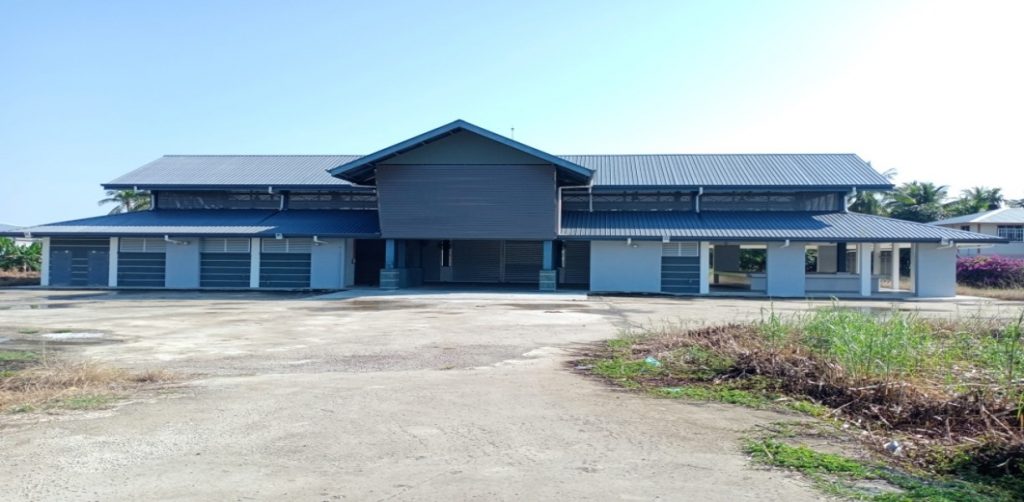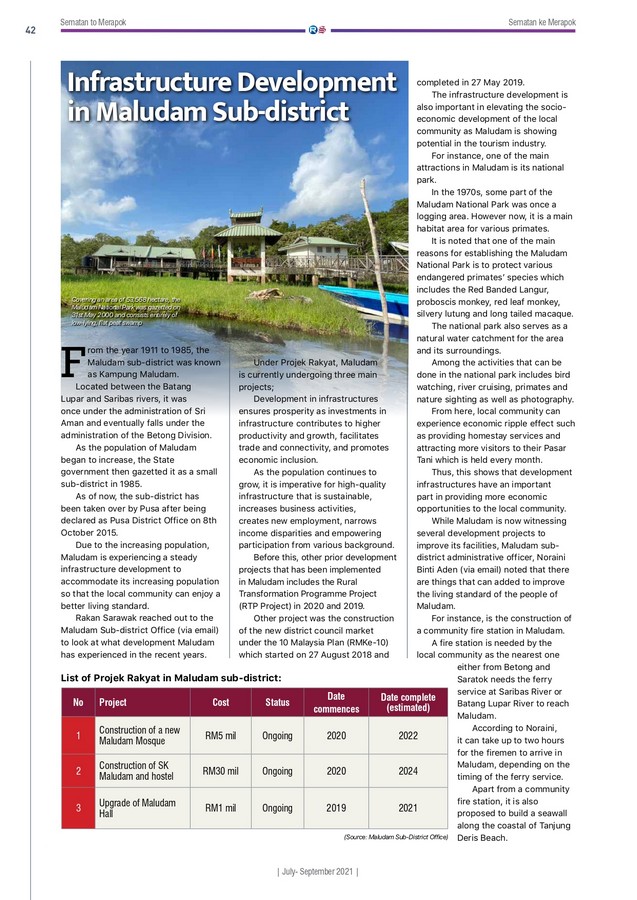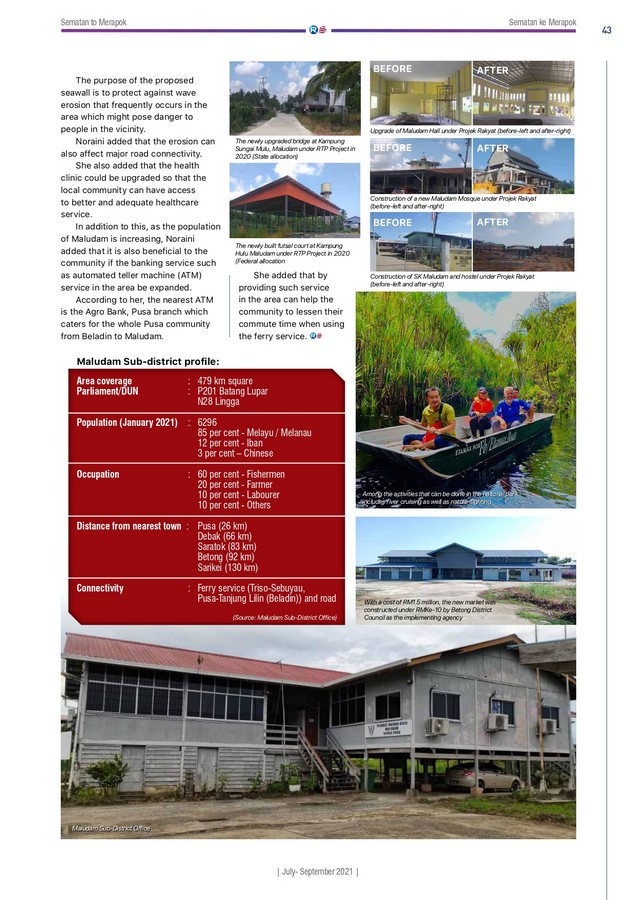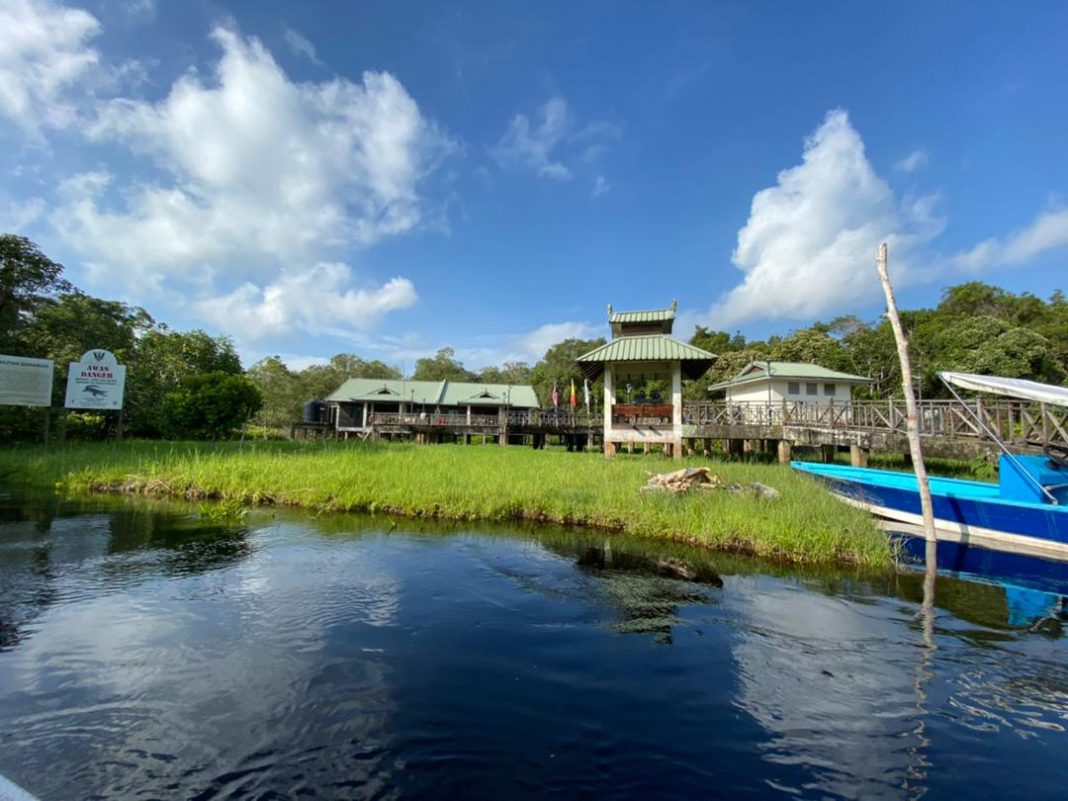From the year 1911 to 1985, the Maludam sub-district was known as Kampung Maludam.
Located between the Batang Lupar and Saribas rivers, it was once under the administration of Sri Aman and eventually falls under the administration of the Betong Division.
As the population of Maludam began to increase, the State government then gazetted it as a small sub-district in 1985.
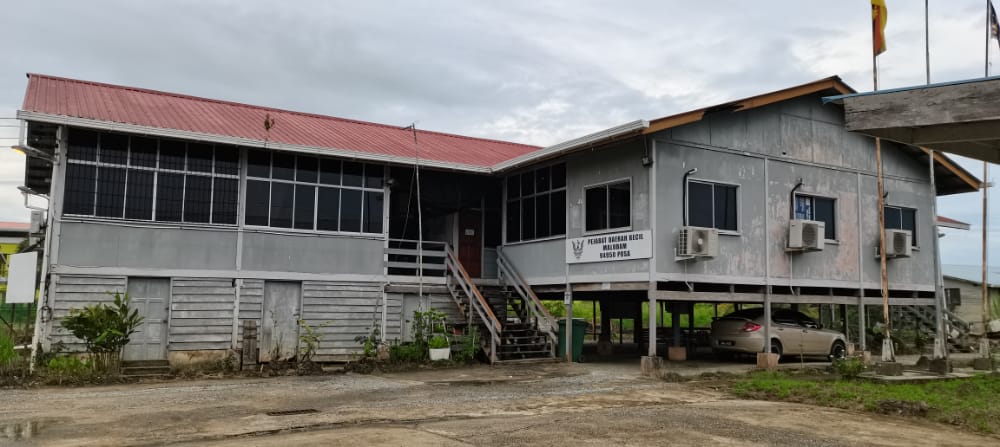
Due to the increasing population, Maludam is experiencing a steady infrastructure development to accommodate its increasing population so that the local community can enjoy a better living standard.
Development in infrastructures ensures prosperity as investments in infrastructure contributes to higher productivity and growth, facilitates trade and connectivity, and promotes economic inclusion.
As the population continues to grow, it is imperative for high-quality infrastructure that is sustainable, increases business activities, creates new employment, narrows income disparities and empowering participation from various background.
Before this, other prior development projects that has been implemented in Maludam includes the Rural Transformation Programme Project (RTP Project) in 2020 and 2019.
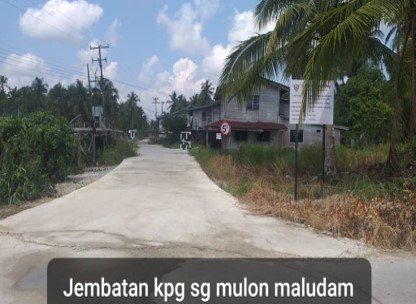
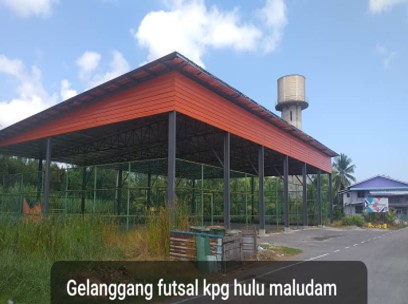
The infrastructure development is also important in elevating the socio-economic development of the local community as Maludam is showing potential in the tourism industry.
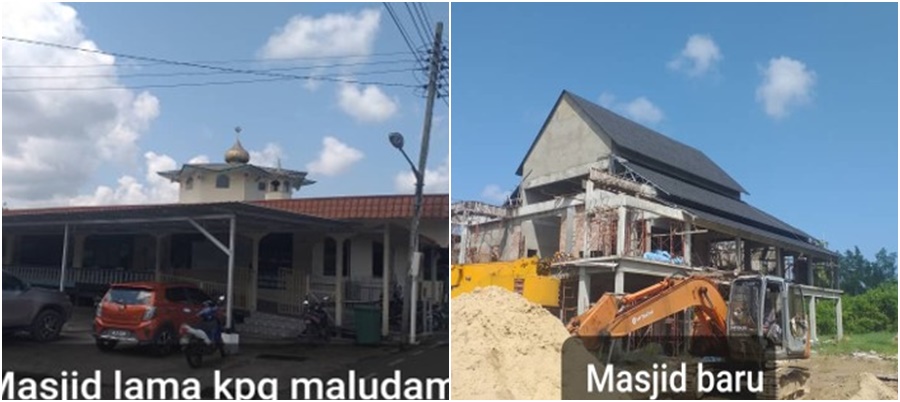
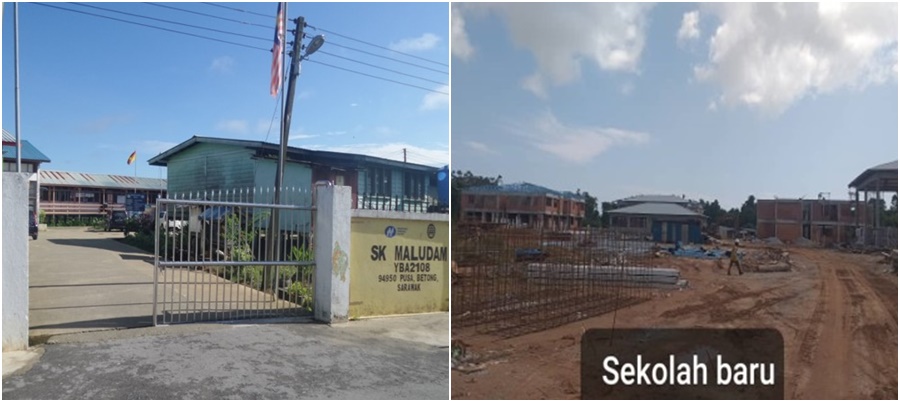
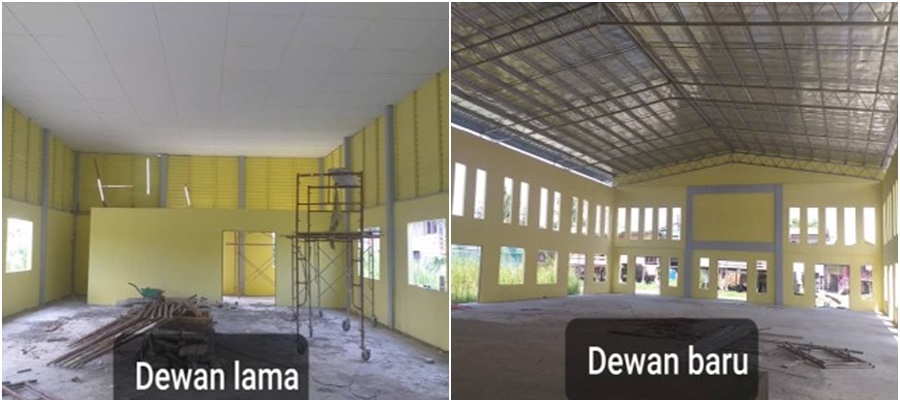
For instance, one of the main attractions in Maludam is its national park.
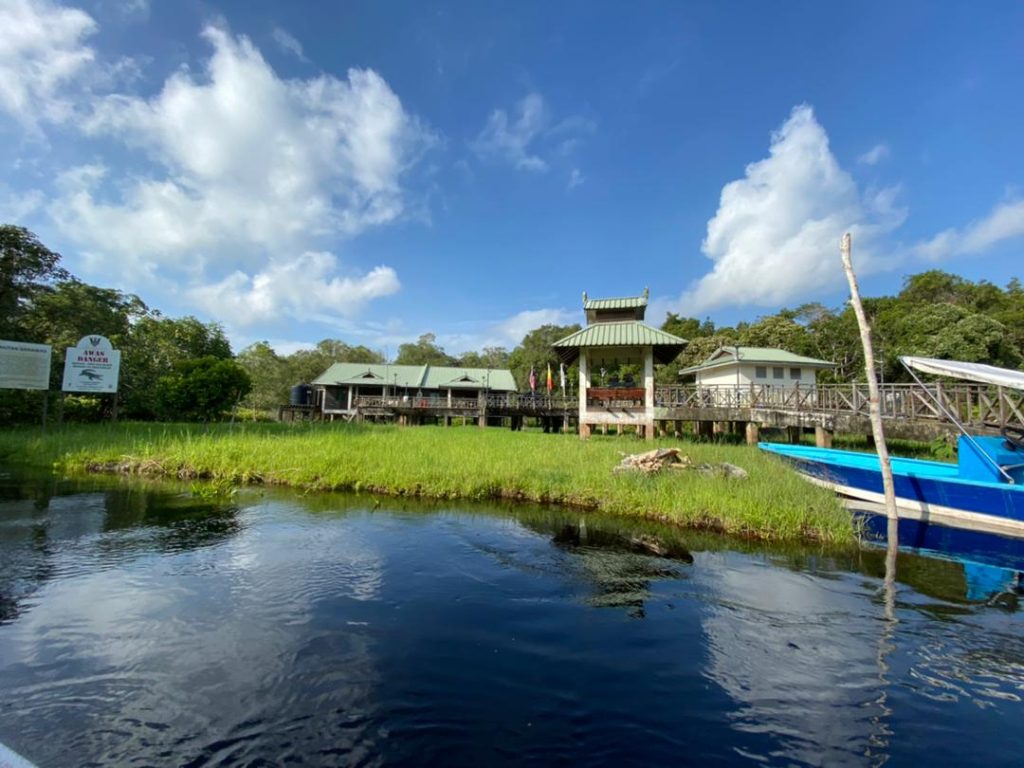
In the 1970s, some part of the Maludam National Park was once a logging area. However now, it is a main habitat area for various primates.
It is noted that one of the main reasons for establishing the Maludam National Park is to protect various endangered primates’ species which includes the Red Banded Langur, proboscis monkey, red leaf monkey, silvery lutung and long tailed macaque.
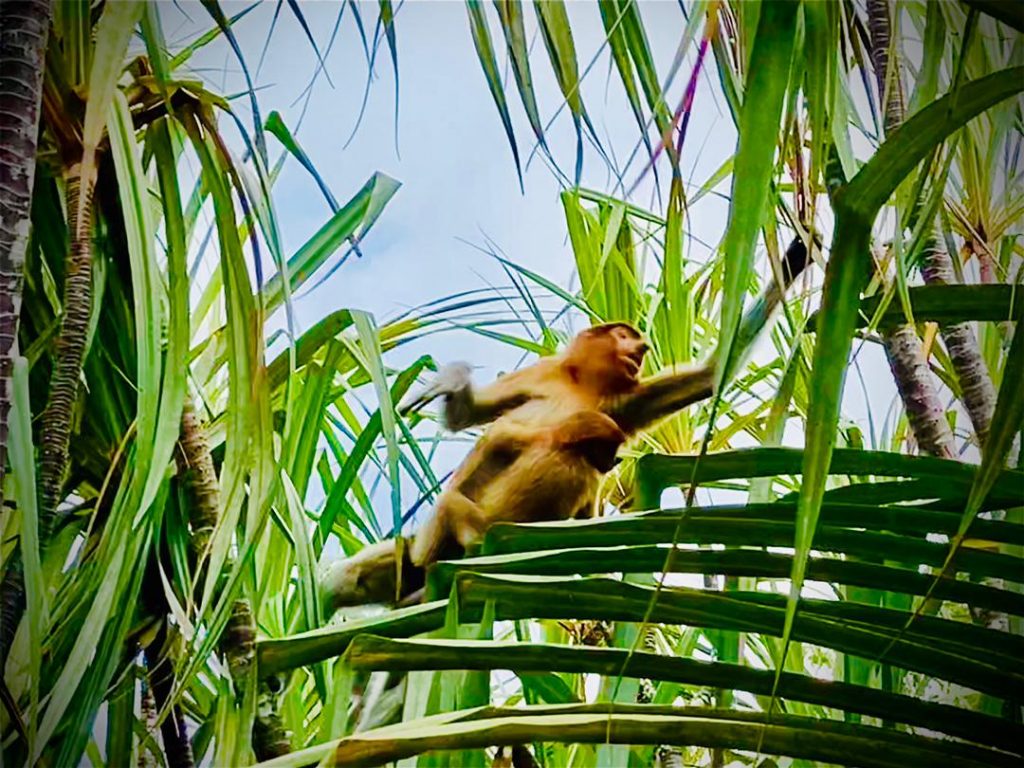
The national park also serves as a natural water catchment for the area and its surroundings.
Among the activities that can be done in the national park includes bird watching, river cruising, primates and nature sighting as well as photography.
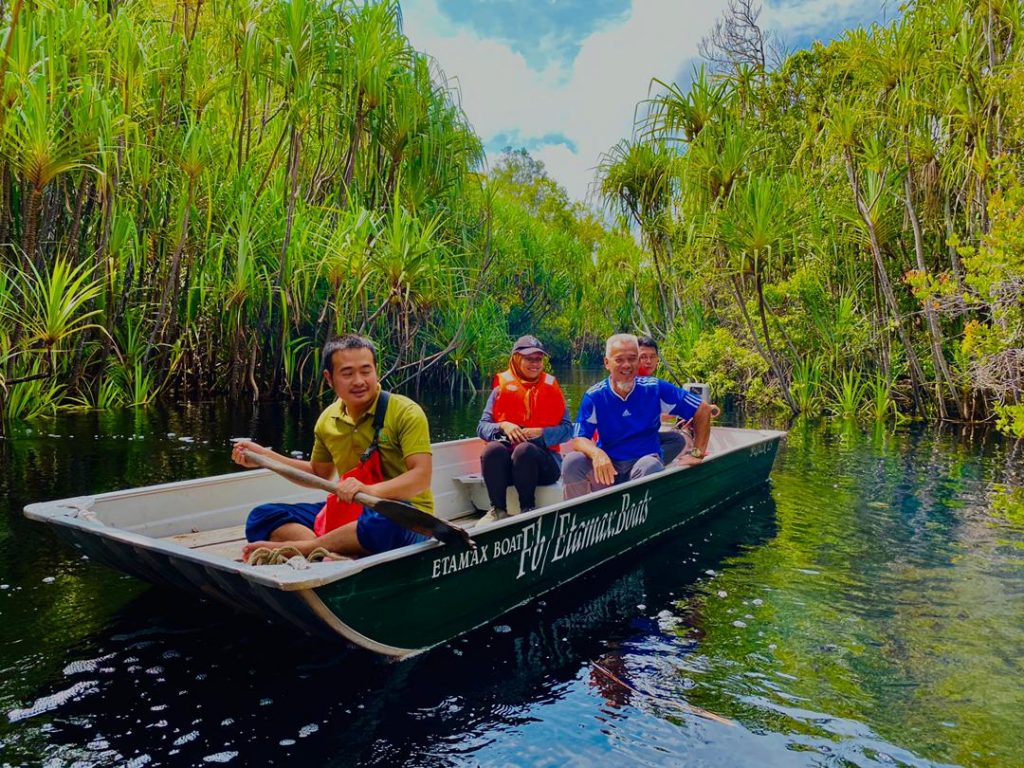
From here, local community can experience economic ripple effect such as providing homestay services and attracting more visitors to their Pasar Tani which is held every month.
Thus, this shows that development infrastructures have an important part in providing more economic opportunities to the local community.
